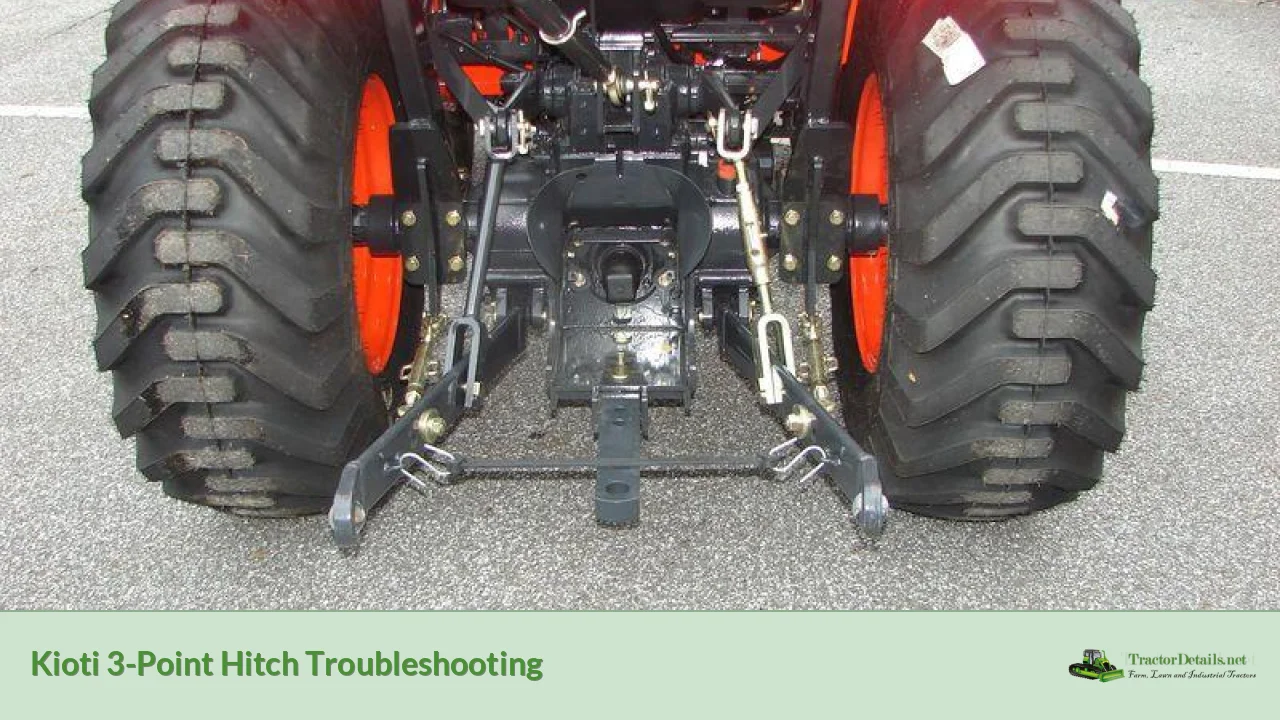The 3-point hitch on Kioti tractors is a crucial component that allows operators to attach and operate various implements. However, like any mechanical system, it can encounter issues that hinder its performance. Common problems include the hitch not raising or lowering properly, jerky movements, or the hitch drifting down unexpectedly. Understanding how to troubleshoot these issues is essential for maintaining the functionality of your tractor.
In this guide, we will explore the most common problems associated with Kioti 3-point hitches and provide practical solutions to help you resolve them. Whether you're a seasoned operator or new to using tractors, this information will assist you in diagnosing and fixing your 3-point hitch problems effectively.
| Common Issues | Possible Causes |
|---|---|
| Hitch won't raise | Low hydraulic fluid, faulty control valve |
| Hitch won't lower | Closed speed control valve, linkage issues |
| Hitch drifts down | Bad seals, low hydraulic fluid |
Understanding the 3-Point Hitch System
The 3-point hitch operates through a hydraulic system that allows the operator to lift and lower implements attached to the tractor. Key components include the hydraulic pump, control lever, and control valve. The hydraulic pump generates pressure by drawing oil from the reservoir, which is then directed through the control valve to lift or lower the hitch.
When troubleshooting issues with the 3-point hitch, it's important to first understand how these components work together. The control lever adjusts the height of the hitch by controlling the flow of hydraulic oil. If any part of this system malfunctions, it can lead to various operational problems.
Common symptoms indicating a malfunction include:
- The hitch won't raise or lower
- The hitch raises slowly or jerks
- The hitch drifts down when not in use
Identifying these symptoms will guide you in determining where to focus your troubleshooting efforts.
Diagnosing Common Problems
Hitch Won't Raise
If your Kioti 3-point hitch won't raise at all, there are several potential causes to investigate:
- Low Hydraulic Fluid: Check your hydraulic fluid levels first. Insufficient fluid can prevent proper operation.
- Faulty Control Valve: If fluid levels are adequate, inspect the control valve for any blockages or damage. A malfunctioning valve can restrict fluid flow.
- Linkage Issues: Ensure that all linkages connecting the control lever to the valve are intact and functioning properly.
To troubleshoot this issue, start by checking fluid levels and topping off if necessary. Next, examine the control valve for any obstructions or signs of wear. If everything appears normal but the hitch still won’t raise, consider consulting a professional mechanic for further assessment.
Hitch Won't Lower
When your 3-point hitch remains raised and won't lower, it could be due to:
- Closed Speed Control Valve: This is a common oversight. Ensure that the speed control valve is fully open.
- Linkage Problems: Check for any disconnections or binding in the linkage between the control lever and valve.
- Mechanical Blockage: If both previous checks are clear, there may be a blockage in the hydraulic system preventing movement.
To resolve this issue, first confirm that the speed control valve is open. Then inspect all linkages for freedom of movement. If these steps do not yield results, further investigation into potential blockages within the hydraulic system may be necessary.
Hitch Drifting Down
If your 3-point hitch drifts down unexpectedly while in use, consider these factors:
- Bad Seals: Worn seals in the lift piston can allow hydraulic fluid to leak back into the reservoir, causing the hitch to lower gradually.
- Low Hydraulic Fluid: Again, ensure that fluid levels are sufficient as low fluid can exacerbate this issue.
To troubleshoot drifting issues, lift the hitch fully and close any lockout valves before shutting down the tractor. If it seeps down after this procedure, inspect seals for wear and replace them if necessary.
Adjusting Hitch Performance
Jerky Movements
If you experience jerky movements when raising or lowering your implement with the 3-point hitch, adjustments may be needed:
- Adjust Lowering Speed Control: Locate and adjust the lowering speed knob under your seat. This knob controls how quickly implements are lowered and can often be inadvertently adjusted during operation.
- Check Hydraulic Fluid Quality: Contaminated or degraded hydraulic fluid can cause erratic movements. Ensure that your fluid is clean and at appropriate levels.
To make adjustments effectively, operate your tractor at a moderate RPM while making changes to observe how it affects performance.
General Maintenance Tips
Regular maintenance of your Kioti 3-point hitch is essential for reliable operation:
- Check Hydraulic Fluid Regularly: Maintain proper fluid levels and replace old or contaminated fluids as needed.
- Inspect Seals and Hoses: Regularly examine seals for wear and hoses for leaks or damage.
- Clean Filters: Ensure that hydraulic filters are clean to prevent blockages in oil flow.
By adhering to these maintenance practices, you can prolong the lifespan of your 3-point hitch and reduce the likelihood of encountering problems in the future.
FAQs About Kioti 3-Point Hitch Troubleshooting
- What should I do if my 3-point hitch won't stay up?
Check for low hydraulic fluid levels or faulty seals. - How can I fix a jerky 3-point hitch?
Adjust the lowering speed control knob and ensure clean hydraulic fluid. - Why does my hitch drift down slowly?
This may indicate bad seals in the lift piston allowing fluid leakage. - What causes my hitch not to lower?
A closed speed control valve or linkage issues could be preventing lowering. - How often should I check my hydraulic fluid?
Regular checks should be done before each use or at least once a month.
Maintaining a functional Kioti 3-point hitch requires understanding its components and being proactive about troubleshooting common issues. By following these guidelines and performing regular maintenance checks, you can ensure smooth operation and extend the life of your tractor’s equipment.
